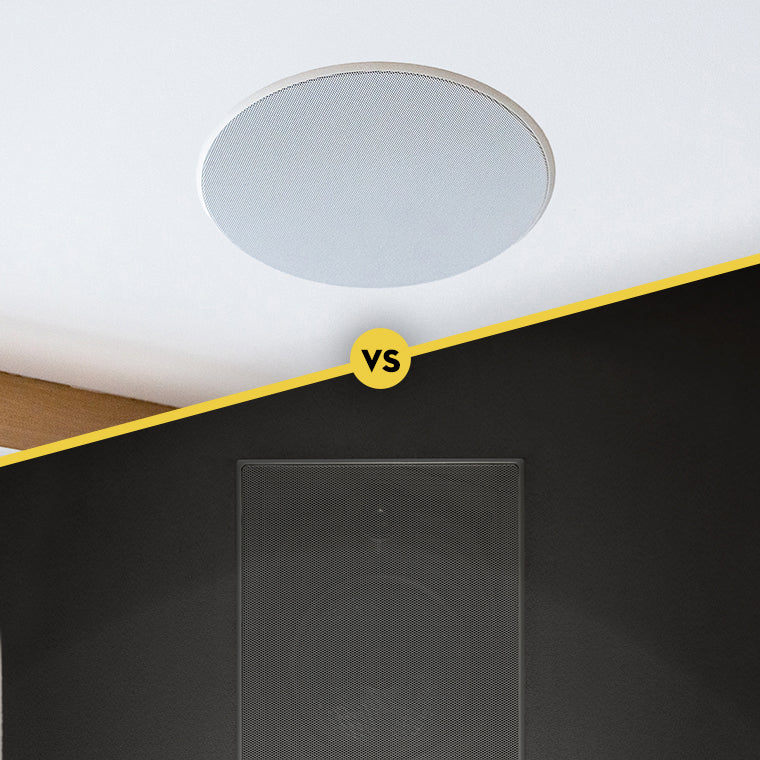In-ceiling and in-wall speakers are both popular options for homeowners looking to install high-quality audio systems in their homes for music and home cinema environments. They offer a discrete alternative to traditional floorstanding box or cabinet-type speakers while offering a more flexible layout design. Plus, unlike traditional freestanding floorstanding speakers, in-wall and in-ceiling speakers don't have to contend with the way the floorstander's cabinet interacts with floors or nearby walls that may cause unwanted reflections.
Recessed architectural installation speakers have an open-back design and, once installed, they utilize the installation cavity as the acoustic enclosure. In terms of the sizes and shapes of recessed speakers we often see the same aesthetic trends of other household items we find on our walls and ceilings. When you look at your walls and ceilings what shapes do you typically see? Doors, windows, picture frames, artwork, and mirrors are typically square or rectangular in shape. Now look up and compare the differences normally found between the wall and ceiling. Light fixtures, ceiling fans, and smoke detectors are commonly circular shapes. Therefore, when comparing in-ceiling to in-wall speakers it is no surprise that we find that most of those product offerings follow that same pattern: in-ceiling are generally round and in-wall are generally rectangular-shaped.
Can you use in-wall and in-ceiling speakers interchangeably? Sure. Some manufacturers are even going to market with speakers engineered to be used as both and calling them "in-wall/in-ceiling speakers". Just keep in mind in-wall speakers tend to be larger which directly impacts the sound they produce. Most in-ceiling speakers have enclosures around 6.5" in diameter, which helps them blend better with recessed light fixtures, but also narrows the sound field. Larger in-wall speakers have more room for sound technology and can produce a larger sound stage.
While both in-wall and in-ceiling serve the same purpose of producing sound in a room without taking up any floor space, there are significant differences between the two types of speakers in terms of design, installation, and sound quality. In-ceiling speakers are often used for multi-room distributed audio setups and home theaters systems. In-wall speakers are often installed near a TV or other audio-visual equipment. While both types of speakers offer similar functionality, there are some key differences to consider.
In-Ceiling Speakers
In-ceiling speakers are generally circular-shaped speakers designed to sit flush in your ceiling and made to stay out of sight. We have installed square-shaped in-ceiling speakers meant to blend well with square lighting fixtures typically found in more modern homes, but circular is the predominant shape you will find out there as they more resemble most recessed ceiling lights. In-ceiling speakers can be purchased individually or in a set and can be custom painted to match your ceiling color. For the most part, you wouldn't typically install just one in-ceiling speaker, unless you were building out a whole-home audio system and expanding music into a powder room or the like.















